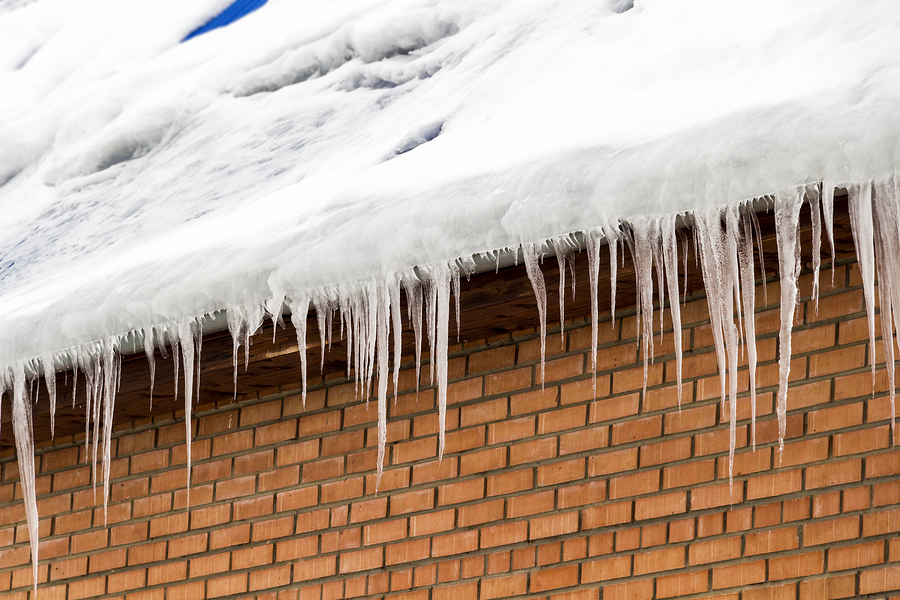Common Winter Roofing Problems and How to Spot Them

There’s no doubt about it, winter is the hardest season on your roof. The cycle of snow, ice, wind, and melting that continues throughout the coldest months of the year can exacerbate any roof problems you had going into winter, along with creating some new ones. Those inclement elements will find any weakness in your roof and exploit it, often to your home’s detriment. That’s why it’s important to know the signs of roof problems so you can stop them before they lead to more costly repairs.
Staying Dry
Leaks are the most obvious clue that something is going wrong on your roof. Locating the source of that leak can be a tricky proposition, especially when the weather turns cold.
Before winter comes, it’s imperative that you do some spot checking on your roof. You should be inspecting the flashing. Flashing is the metal that you see along the front edge, corners and ridges of your roof, as well as where skylights or chimneys meet your roof. Ensure that the flashing isn’t pulling away from your roof. If it has, get it repaired. Once it has come loose from where it was installed, it gives moisture a way inside your roof where it can cause problems.
Take a look under your roof as well. Any condensation in the attic indicates a moisture problem. Even if water isn’t making it all the way into your home, leaks along the exterior walls and wetness in the attic can lead to mold, mildew, and rotting wood-all of which will cause bigger problems later.
Keep Your Roof Intact
While a lot of attention in winter is paid to the snow and ice buildup on the roof, wind can be a very damaging factor as well. After major wind storms, it’s important to survey any damage that may have been caused to your roof. Strong winds can start to loosen asphalt shingles. Once shingles have been pulled loose, it gives water a way under the shingles and into your attic.
Be mindful of any shingles you find on the ground after a big windstorm as well. Even if just a small piece of shingle ends up in your yard, that can indicate an issue that may contribute to more damage down the road.
The wind can also cause problems with tree limbs that might be in close proximity to your roof. Limbs being blown around can also cause roof damage that needs immediate attention.
Bearing the Weight
Beyond just keeping moisture out of your home, roofs in winter are also asked to bear a lot of weight from both ice and snow. While other roofing issues may be obvious to spot, problems from too much weight on the roof can express themselves in less obvious ways.
For instance, you may notice doors in your home may not open as easily, or you may hear popping, cracking, or creaking sounds. These are all signs that your roof is struggling to hold up.
If you fear that the ice and snow on your roof are approaching critical mass, it’s tempting to get up on the roof and try to clear it yourself. However, that can be dangerous for many reasons. If you fear you have a weight problem on your roof, you should always call a professional to mitigate the situation.
In fact, for any roof problems you experience in winter, you should always consult a roofing repair contractor instead of attempting repairs yourself. In Northwest Ohio, contact our experience team of roofing professionals at All-Nu Construction. We’ve been keeping Toledo homes dry and warm since 1996.

